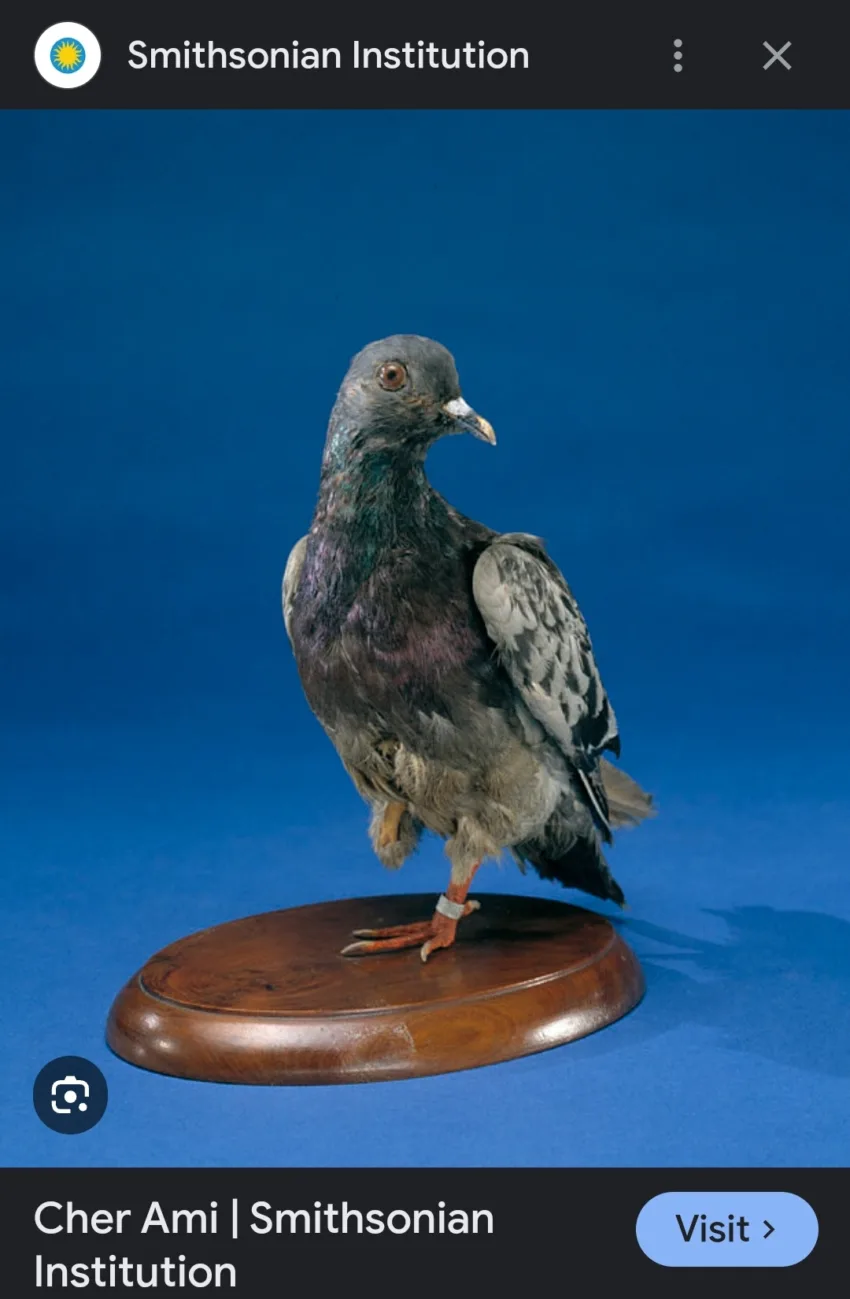8: Cher Ami
Carrier Pigeon That Saved the Lost Battalion in World War I
Born: c. Late March-Early April 1918, Possibly Norfolk, England, United Kingdom
Died: 13 June 1919, Fort Monmouth, New Jersey, United States of America
During the years in which World War I was fought, technologies like telephones and radio communications were still very new and not easily employable on the battlefield. As a result, armies on both sides of the war continued to use older forms of technology, such as employing pigeons to deliver messages across the lines. Though science was not able to prove it until 2013 when a study was conducted, those who employed pigeons in times of war had known for centuries that these birds had an incredible ability to be able to deliver messages. The reason for this is that pigeons are able to distinguish sounds at lower frequencies than humans. With this ability to hear lower sounds, the pigeons are able to create a map in their head based off of the sound waves that they are detecting. By using the map in their brain, pigeons are able to deliver messages to unknown locations and then return home with no issues. Who needs GPS when you can do it all in your head?
Sadly, because the use of pigeons was so well known, German forces were quickly trained to specifically aim to shoot down the pigeons carrying messages. It is unknown how many pigeons were killed during the war, but their service will never be forgotten.
In May of 1918, in the midst of what was then being called “The Great War”, the United States received six hundred English-bred birds, including a black check cock homing pigeon named “Cher Ami” for use in the war.
On May 21st, Cher Ami and fifty-nine other pigeons were assigned to Mobile Loft No. 11 of the US Armed Forces and were sent to the Aisne-Marne Sector of the Western Front in Europe. By September, the unit had moved towards the Argonne Forest, where Cher Ami and his fellow pigeons were used to help support the 77th Infantry Division. In total, Cher Ami would have twelve successful missions throughout the war, a fairly high number for a pigeon.
In October of 1918, a “Lost Battalion” of Allied Soldiers found themselves under attack from heavy—friendly—fire due to an inability to communicate where their position was. According to legend, Cher Ami was the only surviving carrier pigeon still with the battalion, and it was Cher Ami who managed to carry a message to the other Allied forces to stop the attack. The letter Cher Ami carried ended with the following sentence—
“For Heaven’s sake, stop it!”
Soon after taking flight, the American troops watched in horror as Cher Ami was shot in the chest. The small pigeon hit the ground, but he quickly righted himself and took flight once again, this time managing to dodge the rest of the German gunfire.
Cher Ami was able to deliver the message—covering twenty-five miles in around a half an hour, and luckily three days later the battalion was not only located, but also saved as the firing was redirected towards actual enemies. He managed to save the lives of 194 American service men—originally 554 men were a part of the battalion, but once Cher Ami’s message was delivered, the remaining 360 men were either dead or so wounded they had to be evacuated out of the Argonne Forest. When Cher Ami returned to his roost, he did so with a deep wound across his chest and another on his right leg. Both injuries were likely caused by either a bullet or a shell of some sort.
Because of the wound, Cher Ami’s right leg was amputated, he also found himself permanently blinded, and his military service came to an end. The French government bestowed upon him the Croix du Guerre with palm for his brave and heroic actions. He returned to the United States in April of 1919, but because of his injuries Cher Ami passed away in June. After his death, the US Army Signal Corps donated his body to the Smithsonian Institution, where he was subsequently taxidermized.
Sadly, the Army Major that was most tied to Cher Ami’s story, the officer that had been in charge of caring for Cher Ami and sending his messages back and forth, would commit suicide in 1921 as a result of his Shell Shock from the war.
In 1931, Cher Ami was posthumously inducted into the Racing Pigeon Hall of Fame. He also received a gold medal from the Organized Bodies of American Pigeon Fanciers. He was also given the Animals in War and Peace Medal of Bravery in 2019.
In 2021, the Smithsonian conducted DNA testing on Cher Ami’s remains in order to positively identify him as a male pigeon—because apparently his gender had been up for debate for over a century! He is now held in the Smithsonian Museum of American History.
A curator at the museum described Cher Ami’s mission thusly:
“It would be the equivalent of a human getting gut-shot and holding their guts and still walking 100 miles back. It’s just mind-blowing—with a broken leg, I should add.”
Badges Earned:
Find a Grave Marked
Located In My Personal Library:
The Encyclopedia of the Weird and Wonderful by Milo Rossi
Sources:
https://www.si.edu/object/cher-ami%3Anmah_425415

